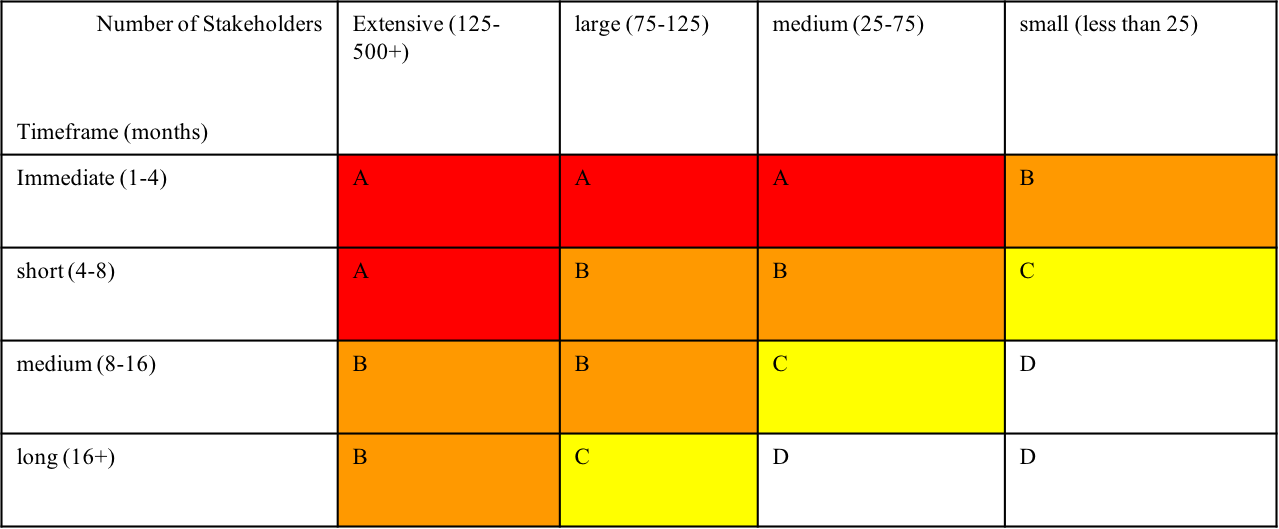You can call me Viviane. And you can consider me your personal collaboration advisor.
So many situations, so many ways of moving forward. All sorts of questions on your mind. Do we need a facilitator? Do I run a town hall? Will an email suffice? Or do we need to do some sort of multi-day Design Thinking workshop offsite? These are all good questions, and all questions that thoughtful leaders are asking in a variety of organizations.
Well, I’m here to help. You can take comfort in the fact that my AI engine has been built on over 200 case studies, across a variety of different environments and sectors. I know a bit – well, a lot, actually – about complexity, about collaboration, and about how to engage with people in order to handle pretty much any situation you will come up against.
I have ten questions for you. They’re all multiple choice, and each one provides me with unique insight into your challenge, and into the best path forward. Your answer might not be precisely covered in any one of the options, but choose the one that has the closest ‘flavour’ to what you’re living right now. You can always go back and change a selection and see how my advice shifts.
Ready?
Let’s go.
Criteria: Vision
Is the vision for this change commonly agreed on, clear, and does it compel action? Are there clear goals and objectives?
Please select the response that most closely describes your situation:
Criteria: Ease of Decision Making
How easy will it be to arrive at critical decisions that determine how this initiative will come about?
Please select the response that most closely describes your situation:
Criteria: Degree of Complexity of the Initiative
How complex is the initiative? What type of solution and innovation does the situation require? What level of impact will this initiative have?
Please select the response that most closely describes your situation:
Criteria: Need for Innovation
What type of innovation is needed? A revolutionary approach/process or a modification of an existing system?
Please select the response that most closely describes your situation:
Criteria: Urgency of Outcome
What is the urgency of the outcome? What is the timeframe to implement? How many stakeholders are involved?
Please select the response that most closely describes your situation by taking into consideration both the number of stakeholders involved and the time available to complete your initiative (see table below for responses):

Criteria: Need for Coordination & Joint Planning
What is the scope of the initiative? How many departments, units and/or external organizations are involved?
Please select the response that most closely describes your situation:
Criteria: Diversity / Number of Stakeholders
How many stakeholders are involved in this initiative or change? How similar or dissimilar are their points of view / needs? Are there multiple cultures or regions represented within the stakeholder community?
Please select the response that most closely describes your situation:
Criteria: Understanding of What Needs to be Done
What level of understanding is being displayed by stakeholders and participants? Are they familiar with the initiative approach or process?
Please select the response that most closely describes your situation:
Criteria: Commitment and Willingness to Adopt
Are the stakeholders committed to the initiative? Are they looking forward to the change?
Please select the response that most closely describes your situation:
Criteria: Current Ability to Execute
Do the right people currently have the right mandate and skills to access to all the resources necessary to pursue this change or implement this initiative?
Note: Resources are defined as the people, finances, material and information necessary to conduct business.
Please select the response that most closely describes your situation:
Recommendation
Recommendations
By the way – if the only two Levels are One and Two – go ahead, send that email! And if you only see Nine and Ten – congratulations. And give us a call – we’m curious about the 10s in the world. That’s our favourite type of work!

Level 10 - Complex Adaptive System
[show_more more=”show more” less=”show less”]
Typical Outcome: Innovative solutions are identified and discussed. If sufficient time is allowed all initiatives discovered during the session can be prioritized, leadership identified and plans put in place.
Limitations: Stakeholders need to be diverse and key decision makers need to be present. Stakeholders must be committed for a fixed period of time(1-3 days).
Factors indicating appropriateness of this method:
- When there is a need to get the “whole system” involved
- There is a large number of stakeholders to engage; 20 to 500+ stakeholders
- A new vision needs to be identified or broadly understood.
- Ground-breaking solutions required
- There is a need to overcome reluctance or resistance by the stakeholders
[/show_more]
Level 9 - Breakthrough Thinking Solutions
[show_more more=”show more” less=”show less”]
Typical Outcome: The invention of a “net new” approach or solution that makes innovative use of internal and external components to design a breakthrough solution.
Limitation: Highly trained specialist(s) required to provide rigor in guiding the participants through a collaborative process of complex problem solving using proven algorithms for invention. The participants should be very familiar with the business and most of the factors that impact upon it. Participants must be willing to commit the time and significant effort required by this method.
Factors indicating appropriateness of this method:
- The organizational vision is undergoing change, but there is a common understanding of the main strategic objectives.
- The need to arrive at an “out of the box” solution is high
- Much more than incremental improvement to the status quo is required
- A dedicated group of stakeholders are available to collaborate on the work
[/show_more]
Level 8 - Exploratory Workshops – Comprehensive Alignment
[show_more more=”show more” less=”show less”]
Typical Outcome: Workshop specialists can lead participants to try new ways of thinking and working that allow participants to adapt to the complex situations they are faced with.
Limitation: Exploratory Workshops require skilled specialists to guide the process.
Factors indicating appropriateness of this method:
- Vision needs to be redefined, but there is a specific objective in mind
- Large number of stakeholders, 25 – 75
- Need a fundamental improvement to an existing system
- Stakeholders need to be coordinated and aligned
- The solution is more a matter of organization and planning than breakthrough
[/show_more]
Level 7 - Guided Workshops – Structured Delivery
[show_more more=”show more” less=”show less”]
Typical Outcome: This structured process can be informative or teach new skills that relate to a specific goal or objective of the organization.
Limitation: There is little opportunity to address divergent issues if they fall outside the matters focused on by the workshop format. This method is not ideal when dealing with resistance to change or trying to solve a complex problem whose solution has previously eluded the organization.
Factors indicating appropriateness of this method:
- Vision needs to be redefined or refreshed
- 10-25 stakeholders.
- Initiative needs to create noteworthy improvements to an existing system
- Need improved ability to execute current and future initiatives
[/show_more]
Level 6 - Open Dialogue – Direction Finding
[show_more more=”show more” less=”show less”]
Typical Outcome: This method of collaboration promotes synergy and cooperation among participants. It can be very effective in removing uncertainty or conflict within an organization when the cause may been lack of communication or inter-personal issues.
Limitation: Open Dialogue usually does not result in specific action in the short term.
Factors indicating appropriateness of this method:
- The vision is being discussed and open to proposed changes.
- There are an array of stakeholders; this process can accommodate large or small numbers
- There is a trained collaborator available to coach participants through the process
- There is a need for improved understanding and commitment among stakeholders
[/show_more]
Level 5 - Facilitated Meeting
[show_more more=”show more” less=”show less”]
Typical Outcome: Balanced participation among all parties present at the meeting.
Limitation: It can be useful to employ a neutral person as the facilitator, although their lack of familiarity with the subject may limit the process. This method may also be restricted by the agenda, as important issues can be marginalized if the convener was not aware of the issue before hand.
Factors indicating appropriateness of this method:
- Vision is being reinforced
- Meeting is agenda driven, with fewer than 20 participants
- The objective is improvements to the existing system
- There is a real need for collaboration; leadership is ready to coach stakeholders through the process
[/show_more]
Level 4 - Face to Face Meeting / Conference
[show_more more=”show more” less=”show less”]
Typical Outcome: Meetings can be an effective method of discussing routine activities or clarifying direction, particularly when there is a need to cover a fixed list of issues in a limited time. Conferences are best suited to a learning based outcome focused on producing information to participants.
Limitation: The structure of this type of collaboration is not ideal when there is a need to engage stakeholders concerning a new initiative or to select and refine new ideas.
Factors indicating appropriateness of this method:
- Vision is reasonably clear and ready to be reviewed if need be
- Agenda driven meetings with few stakeholders (less than 15)
- Objective is minor improvements to current system or approach
- Little collaboration is needed, some convincing and providing direction is the main purpose
[/show_more]
Level 3 - Remote Web / Video Conference
[show_more more=”show more” less=”show less”]
Typical Outcome: Exchange of significant amounts of information including some collaborative evolution of ideas or decisions.
Limitations:
Technical: All participants must have access to appropriate technology. Costs include maintenance and bandwidth charges.
Personal: The limitations of time and the absence of subtle “face-to-face” dynamics have an impact on how much can be achieved.
Factors indicating appropriateness of this method:
- Vision is very clear and ready to be reviewed if need be
- Collaboration is limited to small group of stakeholders, 2-7
- Activity is routine but important. Best if not urgent or highly complex
- Spelling out what needs to be done is the principal objective and only minor issues need to be resolved
[/show_more]
Level 2 - Telephone Call / Teleconference
[show_more more=”show more” less=”show less”]
Typical Outcome: Information and requests can be transferred promptly and easily; it has the advantage over email that minor misunderstandings can be clarified in real time.
Limitation: The lack of visual cues increases the chances of miscommunication. In a busy environment the convener may not know if the participants are engaged in the conversation or have migrated to other tasks while “listening in.”
Factors indicating appropriateness of this method
- Vision is very clear and has been well communicated
- Small group of stakeholders (2-4)
- Functional solution or approach needed
- A minimum amount of collaboration needed to refine specifics
- All stakeholders have the necessary skill sets to execute solution
[/show_more]
Level 1 - Correspondence / Email
[show_more more=”show more” less=”show less”]
Typical Outcome: An exchange of basic information or the giving of simple direction.
Limitation: The use of undefined terms or the absence of subtle cues present during face to face conversation can increase the likelihood of misunderstandings.
Factors indicating appropriateness of this method:
- Vision is very clear and has been previously well communicated
- Small group of stakeholders. Although mass emails can be issued, typically one would not expect a large volume of responses or ongoing exchange of information to clarify issues. This is the primary means of collaboration.
- Task is routine – functional solution or approach is needed
- All stakeholders have the necessary skill sets to execute the solution
[/show_more]
